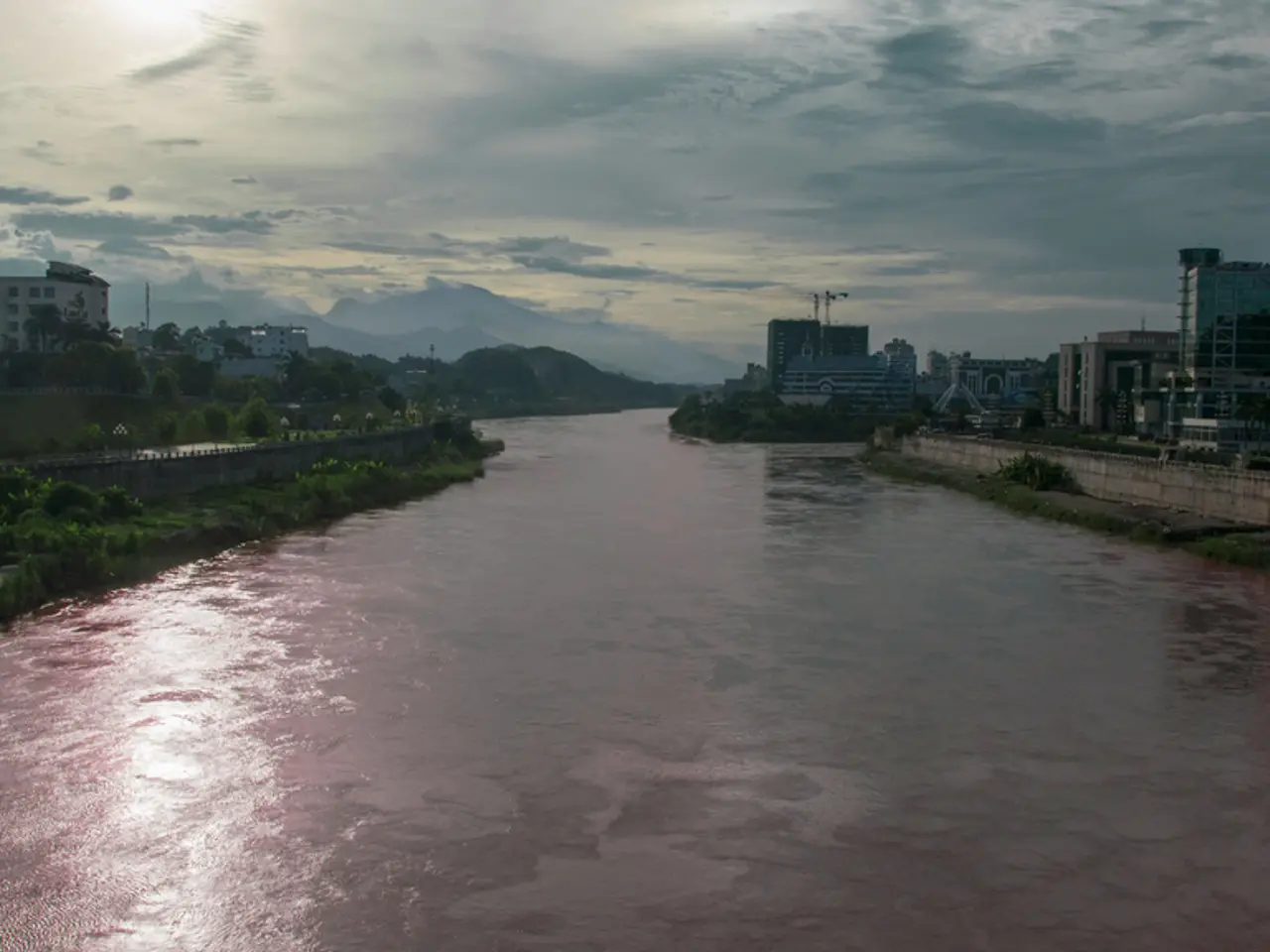Indus River in Pakistan experiences decline, with dying and shrinking observed
In the heart of Pakistan, the once thriving Indus Delta, known for its fertile land, abundant fish, mangroves, and wildlife, is now struggling due to seawater intrusion. This environmental crisis, which has affected over 16% of the region's fertile land, has forced more than 1.2 million people to leave their homes in the last two decades [1].
The root cause of this crisis lies in the reduction of freshwater inflows. This reduction is a result of upstream water use, including hydropower projects and irrigation canals, climate change impacts, and governance challenges [2][3]. India's revocation of the 1960 Indus Water Treaty and the construction of dams upstream pose a significant threat to the Indus River and its delta [3].
The effects of seawater intrusion are profound and far-reaching. Environmentally, the saltwater contamination degrades soil and groundwater quality, making the land unsuitable for agriculture and reducing fish populations in the delta's aquatic ecosystems [1][4]. The rising salinity threatens to submerge villages and further damages the mangrove forests essential for coastal protection [2].
The socioeconomic impact is equally severe. The collapse of farming and fishing livelihoods has forced mass displacement, with entire communities shrinking dramatically. For instance, Kharo Chan, once comprising around 40 villages, has seen most of them disappear under rising seawater [1]. Many displaced families move to urban outskirts like Karachi, facing new social and economic challenges, especially women who had traditional roles in fishing-related activities [2].
Culturally, the loss of the delta's ecosystem disrupts traditional ways of life tied to fishing and agriculture, threatening the cultural heritage of indigenous and local communities [2].
Efforts to mitigate the effects, such as mangrove restoration and the Living Indus Initiative by local authorities, face hurdles due to ongoing development and political tensions [2]. The Sindh government is currently running a mangrove restoration project to protect against saltwater intrusion, but the challenge is immense.
In the face of this crisis, resilience shines through. Haji Karam Jat, a villager, rebuilt his house farther inland due to rising water levels. Despite the hardships, he remains hopeful, stating that people only leave their homeland when they have no other choice [1]. However, many, like Khatti from Abdullah Mirbahar, are preparing to move to Karachi, Pakistan's largest city [1].
The Indus Delta crisis is a stark reminder of the interconnectedness of our environment, economy, and culture. It underscores the urgent need for sustainable water management and governance to protect this vital ecosystem and the millions of lives it supports.
References: [1] The Third Pole. (2021, August 2). The Indus Delta is drowning. Here's why. Retrieved from https://thethirdpole.net/2021/08/02/the-indus-delta-is-drowning-heres-why/ [2] Al Jazeera. (2021, September 20). Pakistan's Indus Delta: A sinking city. Retrieved from https://www.aljazeera.com/programmes/peopleandpower/2021/9/20/pakistans-indus-delta-a-sinking-city [3] The Diplomat. (2019, August 29). The Indus Waters Treaty: A Step Closer to Dispute. Retrieved from https://thediplomat.com/2019/08/the-indus-waters-treaty-a-step-closer-to-dispute/ [4] The News International. (2021, August 12). Indus Delta: A dying delta. Retrieved from https://www.thenews.com.pk/print/836512-indus-delta-a-dying-delta
- Climate change impacts, upstream water use, and governance challenges in India, including the revocation of the Indus Water Treaty and the construction of dams, contribute to the reduction of freshwater inflows into the Indus River, causing severe environmental issues in the River's Delta.
- Environmental science reveals that the contamination of seawater in the Indus Delta degrades soil and groundwater quality, threatens the fertile land, reduces fish populations, and poses a risk of submerging villages, damaging coastal protection infrastructure such as mangrove forests.
- In the face of this crisis, the financial sector and energy industry must collaborate to prioritize sustainable water management practices and renewable energy solutions to mitigate the impacts of climate change and ensure the Delta's survival for the millions of people living in the region.
- The environmental and social challenges faced by the Indus Delta's communities, in terms of culture, livelihoods, and displacement, can be addressed by investing in environmental-science-based initiatives such as mangrove restoration projects, ensuring the equitable distribution of resources, and promoting awareness about the urgency of sustainable development practices.




